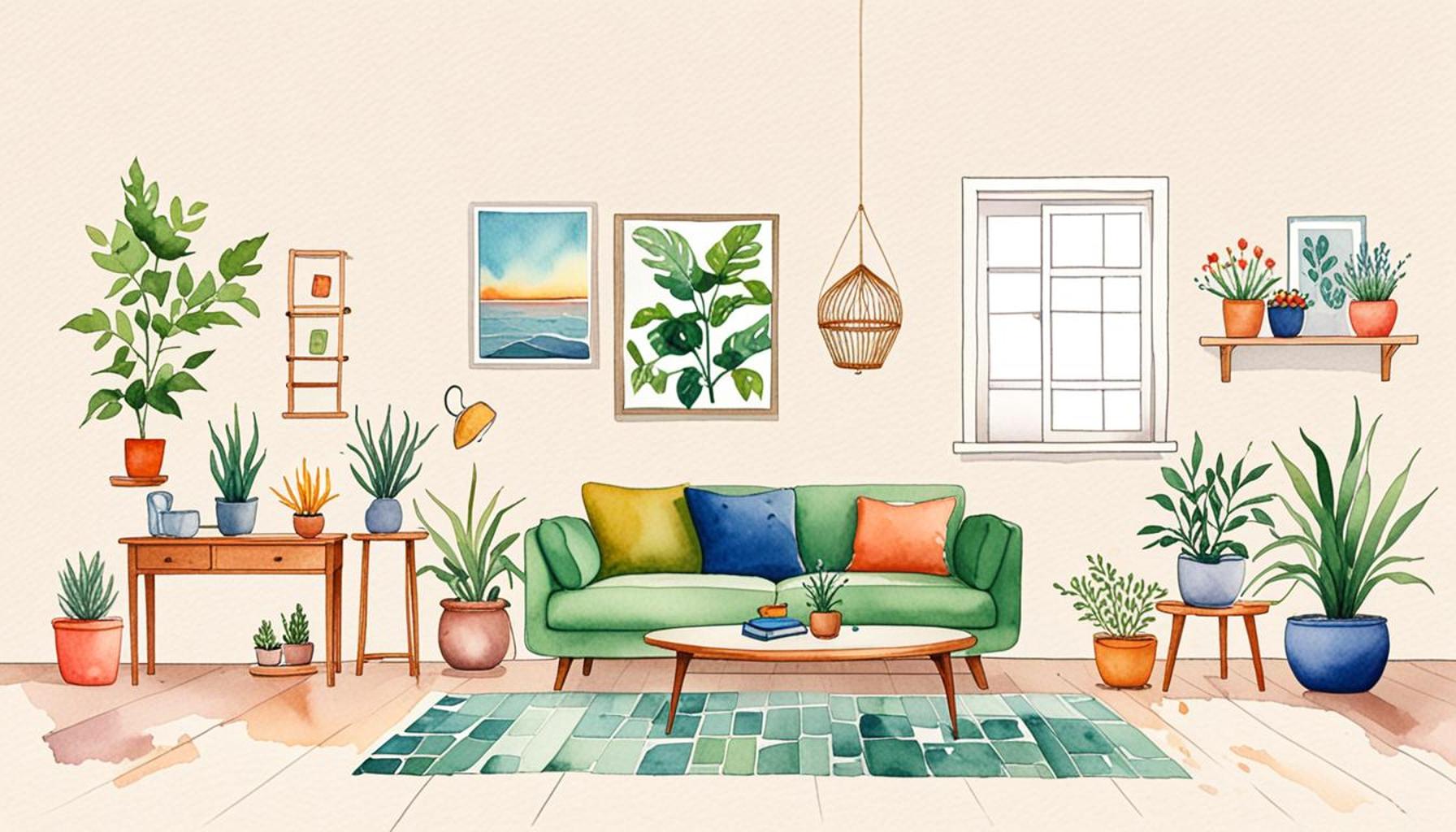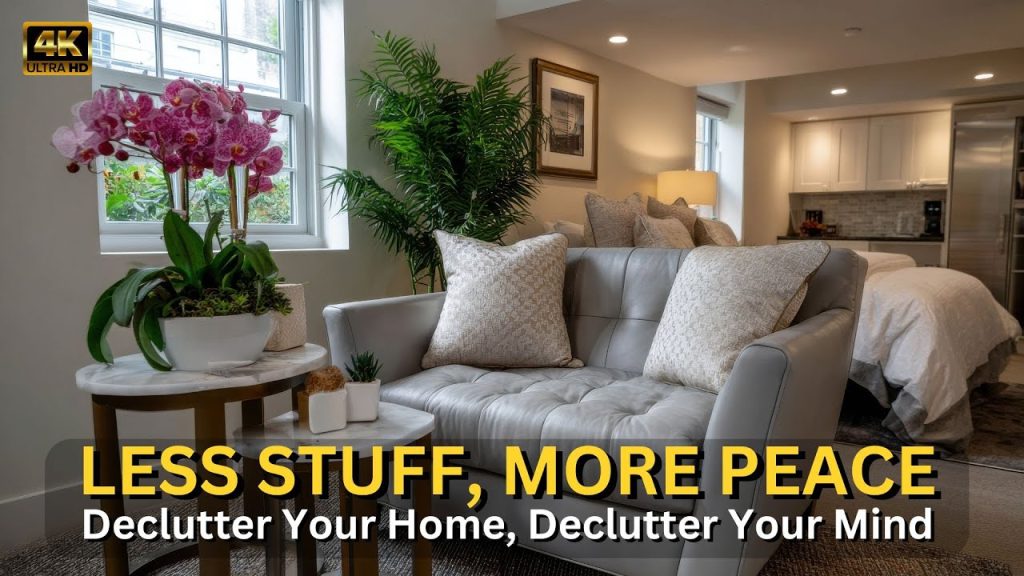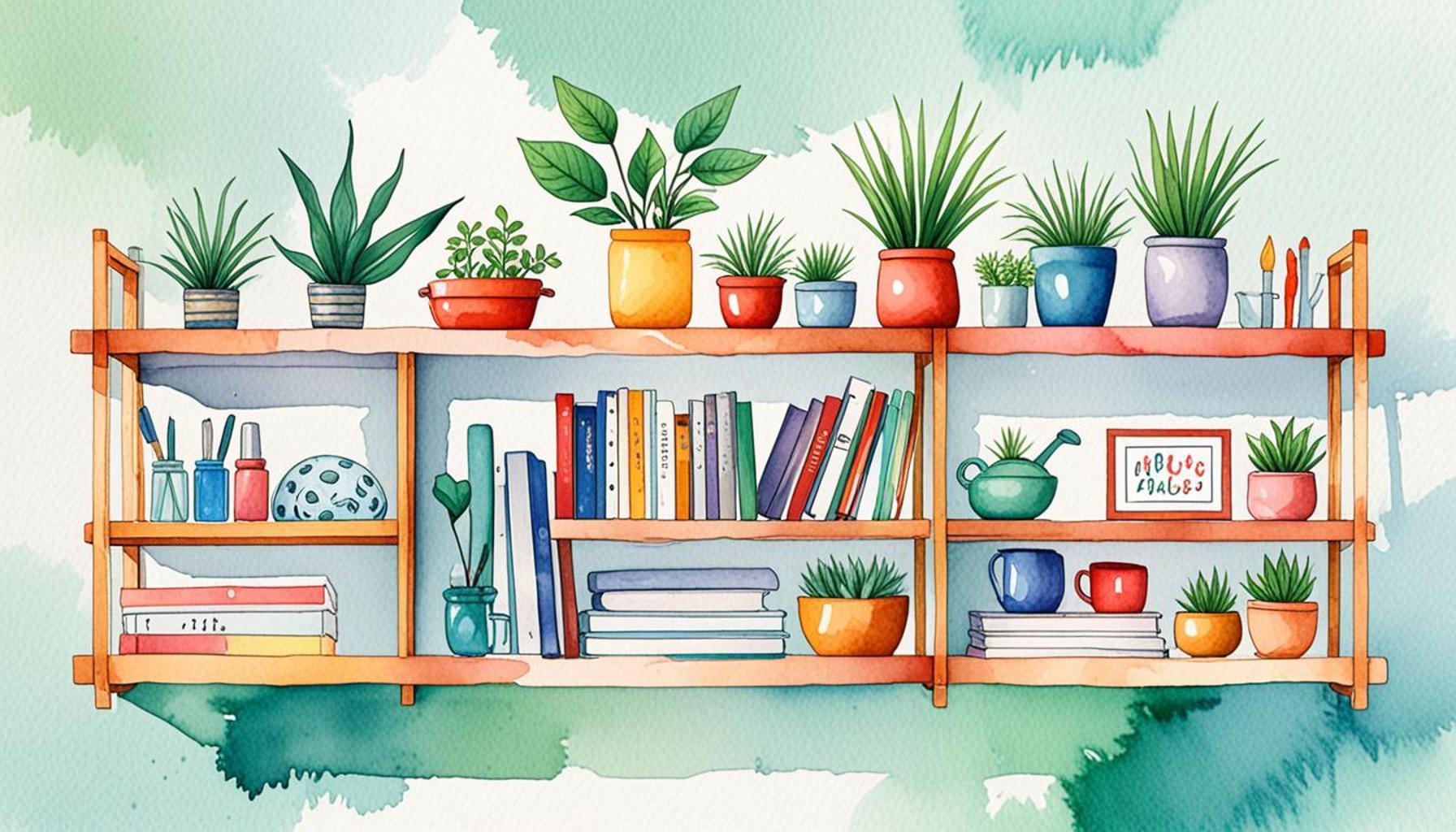How Intentional Living Can Transform Your Minimalist Space into a Sanctuary of Peace

Discovering Intentional Living
In today’s fast-paced world, chaos seems to lurk around every corner. Many are seeking a refuge, a sanctuary of peace, in their own homes. This quest often leads to a shift towards minimalism, where the emphasis on simplicity and functionality becomes paramount.
The Essence of Intentional Living
Intentional living is more than just a lifestyle choice; it’s a mindset focused on creating meaningful experiences and environments that resonate with one’s values. This approach encourages individuals to make deliberate choices in various aspects of life, emphasizing quality over quantity.
At the core of intentional living are several key principles:
- Mindful consumption – This means choosing products and experiences that genuinely add value to your life. For instance, rather than purchasing trendy items that may quickly lose their appeal, consider investing in quality pieces that reflect your style and serve a practical purpose. This could involve opting for eco-friendly materials or supporting local artisans.
- Curated environments – Creating spaces that inspire requires a thoughtful approach to decor and organization. Paint your walls in calming colors, strategically place elements that spark joy, and declutter spaces to eliminate distractions. For example, a serene reading nook with a comfortable chair, good lighting, and personal touches can transform your home into a haven of relaxation.
- Purposeful routines – Developing routines that foster tranquility and clarity is essential for leading a fulfilling life. This can include morning rituals like meditation or journaling, which set a positive tone for the day, or evening practices that promote winding down, such as digital detoxing or enjoying a warm cup of herbal tea.
When these principles are combined with a minimalist approach, intentional living has the power to transform any space into a more harmonious environment. Imagine your home not just as a place to live, but as a nourishing environment that promotes:
- Emotional calm – A retreat from daily stressors, where serene atmospheres and fewer distractions help cultivate a peaceful mind. For instance, incorporating plants and natural elements can enhance your mood and provide a sense of well-being.
- Enhanced focus – A streamlined environment clears the mental clutter, aiding productivity and creativity. By minimizing distractions, whether it’s through a tidy workspace or by implementing designated areas for specific activities, you can boost your ability to concentrate.
- Stronger connections – Intentional living fosters deeper relationships with loved ones. By creating inviting spaces for gatherings, such as a cozy dining area or a fire pit in the backyard, you encourage quality time and meaningful conversations.
In this article, we will explore the very essence of how these principles intertwine. With actionable insights and practical tips, you’ll discover how to cultivate a minimalist sanctuary that resonates peace and intentionality in every corner. Embracing such an approach not only transforms your living space but also enriches your overall life experience.

DISCOVER MORE: Click here to learn about mindful consumption
Creating a Peaceful Mindset
To begin transforming your minimalist space into a sanctuary of peace, one must first establish a peaceful mindset. Intentional living encourages you to reflect on what truly matters, allowing you to prioritize aspects of life that bring joy and fulfillment. This level of self-awareness not only sharpens your focus on minimizing the physical clutter but also helps you sift through the emotional clutter that can hinder your peace.
The Impact of Mindfulness
Mindfulness is a cornerstone of intentional living. Practicing mindfulness means being fully present in each moment, cultivating an awareness that enhances your everyday experiences. This awareness fosters a deeper connection between you and your surroundings, enabling you to appreciate the beauty in simplicity.
When you consciously choose to engage with your environment, your living space transforms from merely a backdrop of daily life to a reflective sanctuary. Here are key strategies to harness mindfulness within your home:
- Daily rituals – Begin or end your day with intentional practices such as meditation, deep breathing, or gratitude journaling. These rituals create moments of mindfulness that help center your thoughts.
- Engage your senses – Infuse your space with sensory experiences that promote calmness. This might include soft lighting, aromatic candles, or soothing sounds like nature playlists. Each element invites tranquility and encourages you to remain grounded.
- Observe your thoughts – Recognize when negative thoughts arise and intentionally focus on them without judgment. This practice shifts your mindset, allowing space for positivity and serenity.
By integrating these mindful practices into your daily routine, you not only create a space that caters to your physical needs but also fosters mental well-being. When your mind is clear and focused, you can more easily navigate the complexities of life with grace and intention.
Transforming Space through Intentional Design
Alignment of your physical environment with your intentions is critical. Minimalism combined with intentional living creates the perfect backdrop for a sanctuary that nurtures the soul. Consider these elements when designing your space:
- Color palette – Choose soothing colors that evoke calmness, such as soft blues, greens, or pastels. These hues can create a sense of tranquility and help you unwind.
- Furniture selection – Invest in multifunctional furniture that caters to your needs while minimizing visual clutter. For instance, a storage ottoman can serve as both seating and a space for extra blankets.
- Personal artifacts – Display items that resonate with your journey or remind you of cherished memories. This can serve as both a visual and emotional anchor, increasing your sense of belonging.
As you embrace these design principles, your minimalist space evolves beyond mere functionality to become a personalized retreat. The alignment of your environment with intentional living is a powerful invitation for peace, allowing you to cultivate a life defined by clarity and purpose.
| Advantage | Description |
|---|---|
| Increased Focus | By minimizing distractions, a minimalist space fosters greater concentration on personal goals and aspirations. |
| Emotional Clarity | Intentional living promotes a peaceful mindset, enhancing self-reflection and emotional well-being within your sanctuary. |
| Enhanced Well-being | Living intentionally encourages a lifestyle that cherishes mental health and tranquility, creating a harmonious environment. |
| Simplified Life | Fostering simplicity leads to clearer decision-making and contentment in personal choices, reducing stress. |
Intentional living in a minimalist space not only transforms your surroundings but enhances your mental clarity and emotional well-being. Focusing on what truly matters allows you to create a sanctuary of peace which reflects your innermost desires. By immersing yourself in this lifestyle, you eliminate distractions that often lead to chaos, thus paving the way for a more fulfilling and centered existence. As you embark on this journey of transformation, you’ll find that your minimalist space serves as a powerful tool for cultivating gratitude and mindfulness in your daily routine. Exploring how to incorporate intentionality into your life at home can lead to profound changes, inviting serenity and purpose into your personal sanctuary. Whether it’s through decluttering or establishing mindful practices, there’s a wealth of benefits to discover within your minimalist sanctuary that await your embrace.
DISCOVER MORE: Click here to enhance your focus
Infusing Nature into Your Home
Another essential element to consider when achieving intentional living within your minimalist space is the incorporation of nature. Creating a harmonious connection between your indoor environment and the natural world can significantly impact your overall sense of peace and well-being. In fact, studies show that incorporating natural elements into your space can reduce stress, enhance creativity, and improve your mood.
The Benefits of Biophilic Design
Biophilic design is a growing trend that emphasizes the need for humans to connect with nature. This approach not only promotes aesthetics but also enhances mental health. Here are ways to include biophilic design in your sanctuary:
- Houseplants – Bring life into your space by selecting low-maintenance houseplants such as snake plants, pothos, or peace lilies. These plants enhance air quality and add color, making your environment feel more vibrant and refreshing.
- Natural light – Maximize the natural light in your home by utilizing sheer curtains or strategically placing mirrors to reflect sunlight. Natural light not only boosts productivity but also regulates your circadian rhythms, contributing to better sleep.
- Natural materials – Incorporate organic materials into your design, such as wooden furniture, stone accents, or bamboo textiles. These elements create a tactile connection to nature, fostering a sense of warmth and tranquility.
By embracing the principles of biophilic design, you cultivate a relaxing atmosphere that enhances your minimalist space, allowing you to experience nature’s calming powers daily.
Decluttering Beyond the Physical
While many associate decluttering with physical possessions, intentional living encourages a deeper examination of mental and emotional clutter as well. To truly experience peace, one must not only manage the items that occupy physical space but also address the thoughts and emotions that can weigh heavily on the mind.
- Digital minimalism – In our technology-driven world, digital distractions can accumulate just like physical clutter. Unsubscribe from unnecessary emails, organize your digital files, and set boundaries around screen time to promote a healthier digital lifestyle.
- Emotional check-ins – Regularly assess your emotional well-being. Create a journaling practice where you can analyze your feelings and experiences, identifying patterns that may contribute to your overall stress levels.
- Letting go – Practice the art of letting go—whether it’s past grievances, toxic relationships, or unproductive habits. This conscious release can free up mental energy and encourage personal growth.
Addressing emotional and mental clutter in your intentional living journey allows you to clear the pathways to your sanctuary, ensuring a peaceful residence that nurtures both the body and the mind.
Intentional Living Through Community
While creating a sanctuary within your minimalist space may seem like a solitary journey, it’s essential to recognize the value of community. Intentional living isn’t just about individual choices; it also thrives on connections with others. Surrounding yourself with like-minded individuals can enhance your commitment to peace and simplicity.
- Meaningful relationships – Foster connections with friends and family who share your values. Engaging in deep conversations and shared experiences can elevate your sense of belonging, reinforcing the peace you seek in your sanctuary.
- Support networks – Seek out local groups or online communities centered around intentional living and minimalism. Sharing insights and inspiration can motivate you and provide a sense of accountability.
- Community service – Consider participating in or organizing community service events. Giving back not only builds community but also fosters a sense of purpose, further enhancing the tranquility of your personal environment.
By stitching together relationships that embody intentionality and support, you not only enrich your personal sanctuary but contribute to creating a harmonious community that thrives on peace and mindfulness.
DISCOVER MORE: Click here to learn about mindful consumption and sustainability
Embracing Peace Through Intentional Living
Incorporating intentional living into your minimalist space offers a transformative opportunity to cultivate a true sanctuary of peace. By thoughtfully integrating elements of nature, such as houseplants and natural light, you foster a calming atmosphere that encourages relaxation and enhances mental well-being. The principles of biophilic design not only embellish your space but also invite tranquility and connection to the outdoors.
Moreover, the journey of intentional living extends beyond physical decluttering. Addressing emotional and mental clutter through practices like digital minimalism and emotional check-ins allows you to cultivate clarity and foster personal growth. Letting go of unproductive habits and toxic relationships can liberate your mind, making space for peace and positivity.
The role of community cannot be underestimated in this journey. Cultivating meaningful relationships provides support and connection, reinforcing your commitment to intentional living. Engaging in community service or joining local groups centered around minimalism enriches not only your sanctuary but also the collective pursuit of peace in your environment.
As you align your home with the values of intentionality, simplicity, and connection, you create a space that mirrors your inner tranquility. This profound journey towards intentional living will not only transform your minimalist space but will also cultivate a deeper sense of well-being, where every corner of your home resonates with peace. Embrace this journey today, and witness how your surroundings can manifest serenity and fulfillment.


